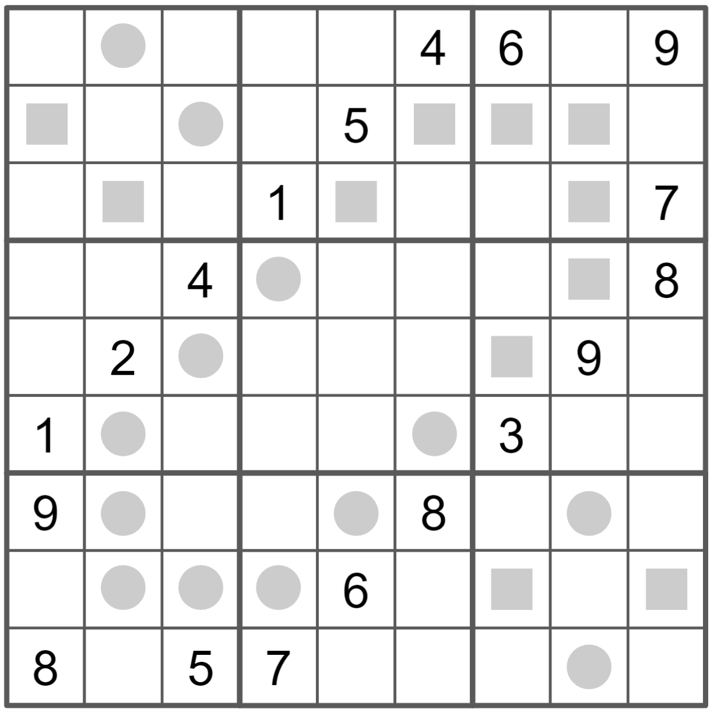Even-Odd Sudoku
Same rules of the standard sudoku, i.e., place the digits 1 through 9 into the grid so that no digit repeats in any row, column, or bold region.
In addition, cells with a square must contain an even digit and cells with a circle must contain an odd digit.
Diving Deeper
-
The Even-Odd Sudoku is somewhat easier than the traditional Sudoku because it has more clues, the even-odd positions.
-
Suppose that there are 9 jobs and 9 machines. Each job is composed of 3 tasks, and each task requires 3 machines to work on it.
Each machine must perform exactly one task on each job, which means that all 9 machines work on every job.
In addition, no machine can perform the same task on more than one job, and no machine can work on more than one task at the same time.
There are already some pre-assignments. For example, Machine 4 will perform Task 6 on Job 2 in Shift 1, and Machine 5 will perform Task 5 on Job 2 in Shift 2.
In addition, some job-task-shift combinations require an "even" machine and some require an "odd" machine. Machines are identified as even or odd based on their ID. For example, an odd machine must perform Task 2 of Job 1 in Shift 1, and an even machine must perform Task 1 of Job 1 in Shift 2.
In the context of the Even-Odd Sudoku, rows are shifts, columns are tasks, jobs are blocks, and machines are represented by the digits 1 through 9.
-
This puzzle can be solved with mixed-integer programming or constraint programming. The requirement of even-odd positions makes this puzzle even more interesting to formulate than the traditional Sudoku.

